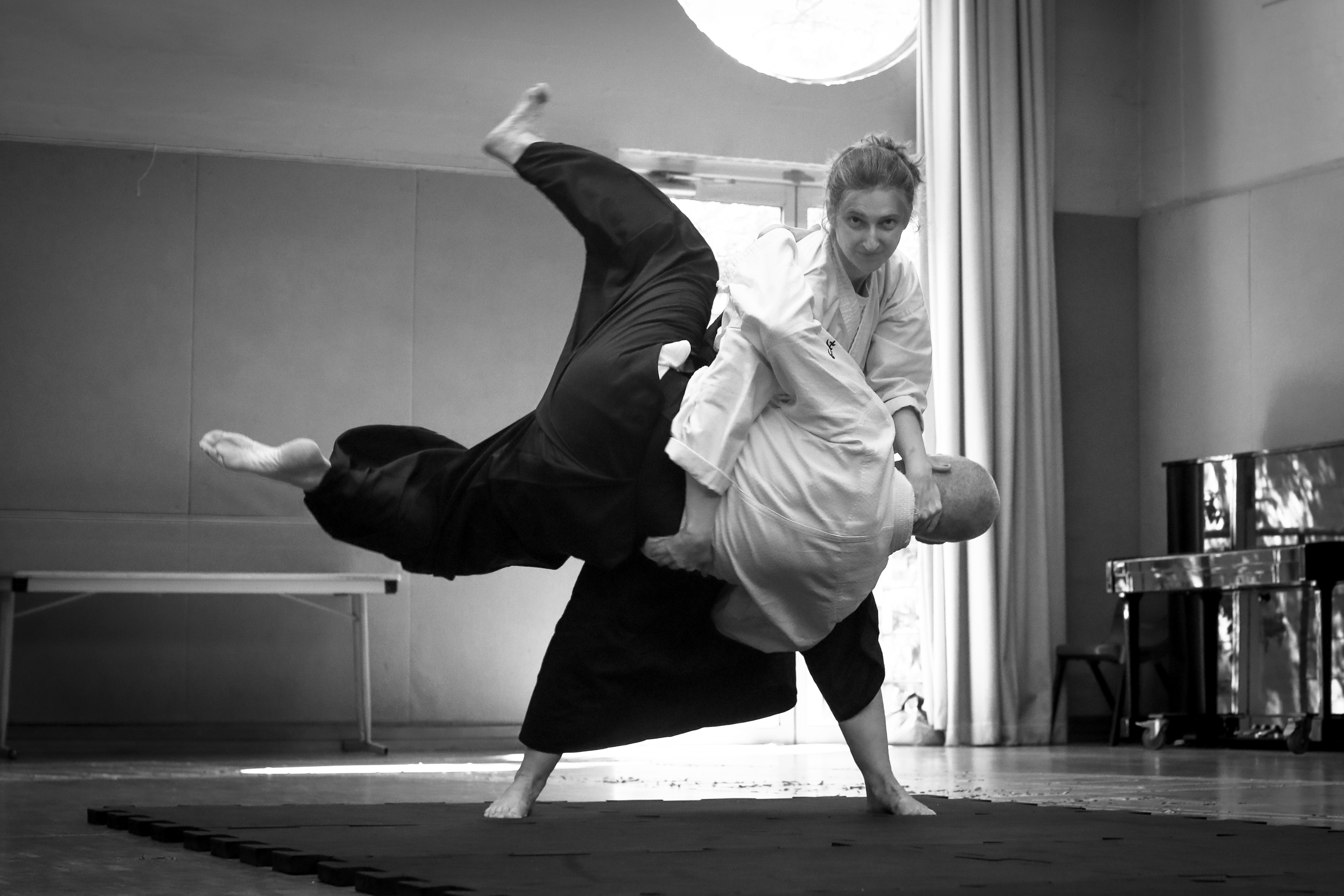Ars longa, vita brevis The art is long, and life is short.
Andrew Sunter Sensei’s guidelines for training
(Abridged and reproduced with permission)
We look forward to Sunter San’s visit to our annual Winter retreat for a special session on the nature of Budo.
1.Aikido is a principle-based art, not a technique-based art.
2. Everything has advantages and disadvantages
Everything has advantages and disadvantages: every person, every culture, every art, every situation and every moment. It is unreasonable to expect perfection. The only “one true way” is the tortuous path I navigate for myself through accidents, wrong turns and poor decisions, emulating the people I admire, trying to live up to my chosen ideals, and striving toward the best possible outcome for all. It is important to remember to include myself in “all”.
3. There is nothing new under the sun
There is nothing new under the sun. I do not believe this means that one group is right and the other group is wrong. Nor do I believe there are only two narrow options to choose between. We do not all live in the same house in the same street. Circumstances change and we have to deal with them as best we can. This is true for all people in all countries in all cultures and in all arts. If the “traditional”, “authentic”, “Japanese” way is to follow one teacher unquestioningly, how do new arts arise? How can there be more than one sword school? How can there be different branches and lineages within one school? This does not mean that any yudansha would be well-advised if they were to start their own independent style. Musashi Kensei said we must do a million cuts before venturing from home…
4. Boundaries without Aikido
Over time I have learned just how little I know, and I have been convinced of the value of diversity of opinion and approach, and the value of peer-review. I wish that I could train every week with my teacher, but that is not possible. Without that regular guidance, I rely on the feedback of trusted seniors, peers and juniors to guide me on my progress in the application of the principles.
5. It’s up to you
There was a time when Maruyama Sensei responded, “It’s up to you”, to all manner of questions, from the trivial to the profound. I don’t think it ever meant, “Anything you decide is OK with me.” To me it means, “You have to take responsibility for your own decisions, your own actions, your own training.” It is not up to Sensei whether or not I learn and develop as a result of his instruction. It is up to me.
6. Train joyously
It’s often said that O-Sensei exhorted us to “train joyously”. Sometimes, in training, the effortless application of a principle elicits a shout of laughter and astonishment from uke (and sometimes even from nage). For me, this suggests there is a possibility that some actual aiki might be in the offing. I will pursue this relentlessly.
7. Everything rests on the tip of motivation
A Buddhist aphorism states, “Everything rests on the tip of motivation”. I cannot know whether what I decide is for the best or not, but doing my best to ensure correct motivation makes the consequences a whole lot easier to live with.
8. The roles of uke and nage
Maruyama Sensei has taught us that our practise is kata-based and that uke’s role is to assist nage to improve their performance at every repetition. When uke does not support the learning process, I believe not only that this is a waste of time, but also that both participants are actively getting worse. They would have been better at aikido if they had stayed home.
9. The roles of teacher and student
A recent post admonished us all to read up on our responsibilities as students. What jumped out at me was not what it had to say about the responsibilities of the student, but those of the teacher. In some cultures, people believe that as they rise in rank they have more and more authority over others, that increasingly they can do what they please, that the rules apply to others and not to them, and that lesser mortals have the responsibility to suck it up.
In functional cultures, people take on more and more responsibility for others as they rise in rank, and their authority comes from the respect and trust of the people junior to them.
In Buddhist thought, a teacher is a “spiritual friend”: not someone to hang out with, but someone you can trust always to tell you the truth, and always to guide you in your own best interests, whether you recognise them or not.
10. Ars longa, vita brevis The art is long, and life is short.
O-sensei famously said, “This old man must still train and train.” I must not waste a minute. There is no time for ego. No time for competition. No time for talkie-nage.
Have we missed anything?..please add to the comments section below


1 comment for “Ars longa, vita brevis, The art is long, and life is short.”